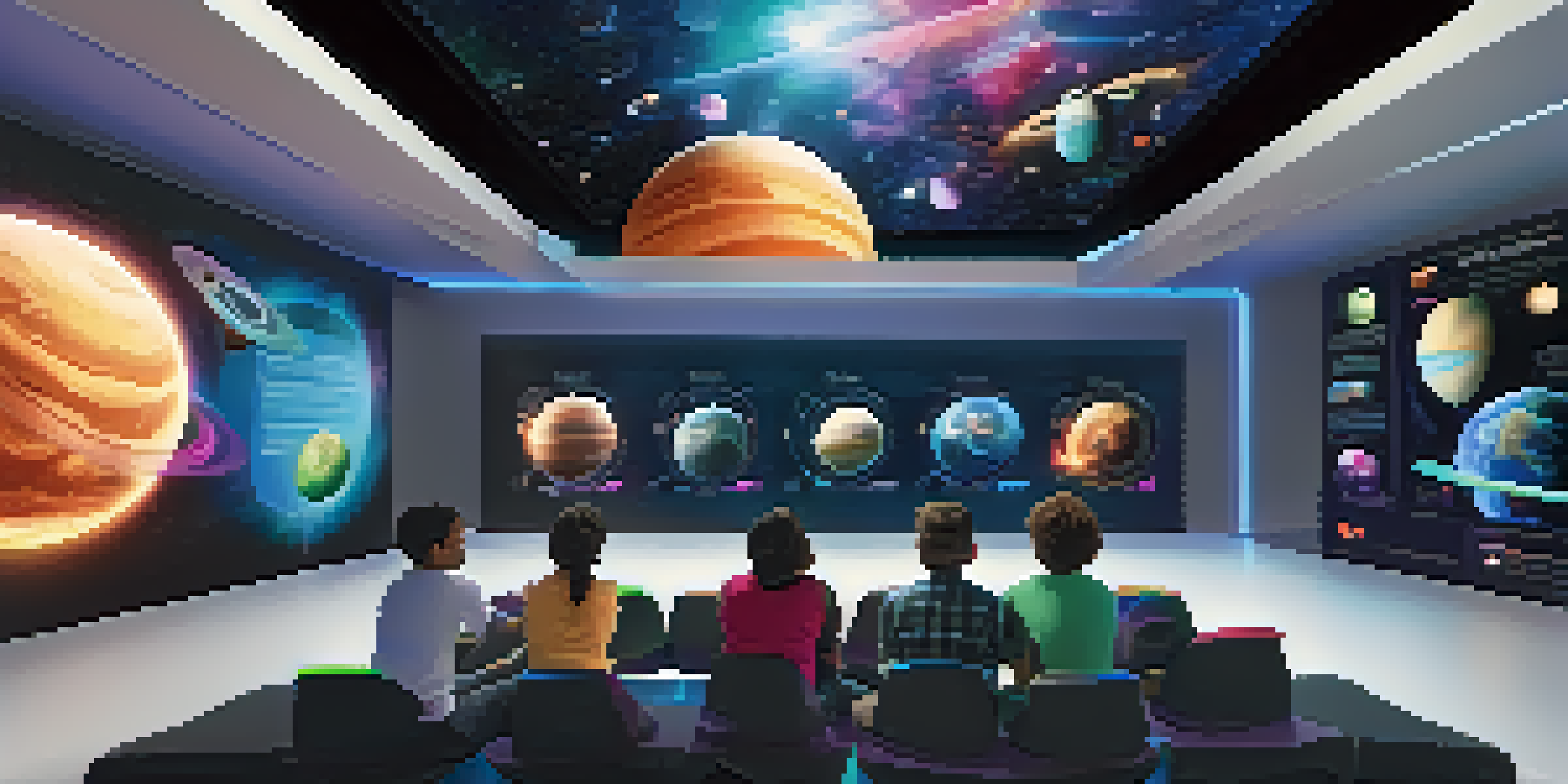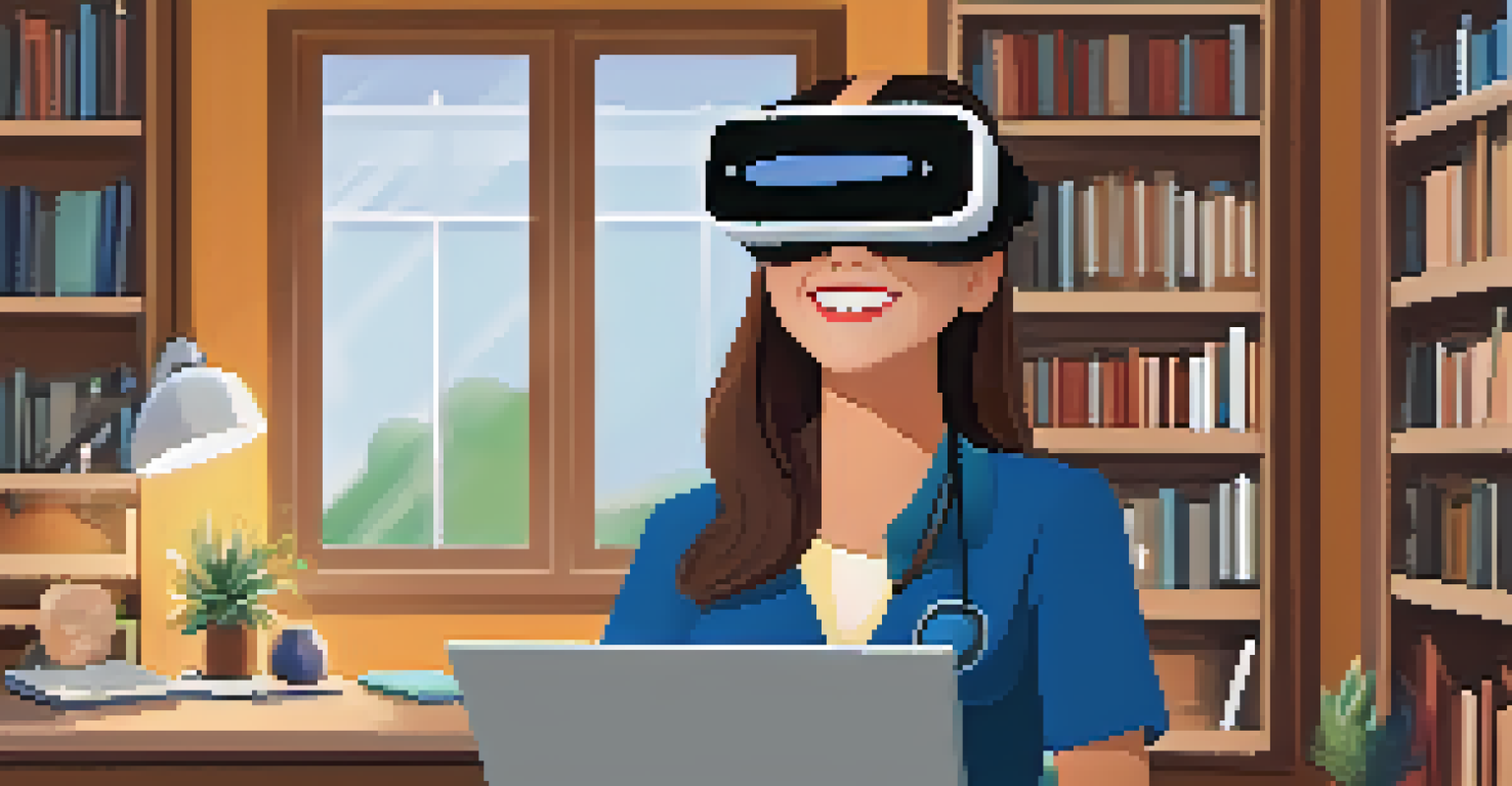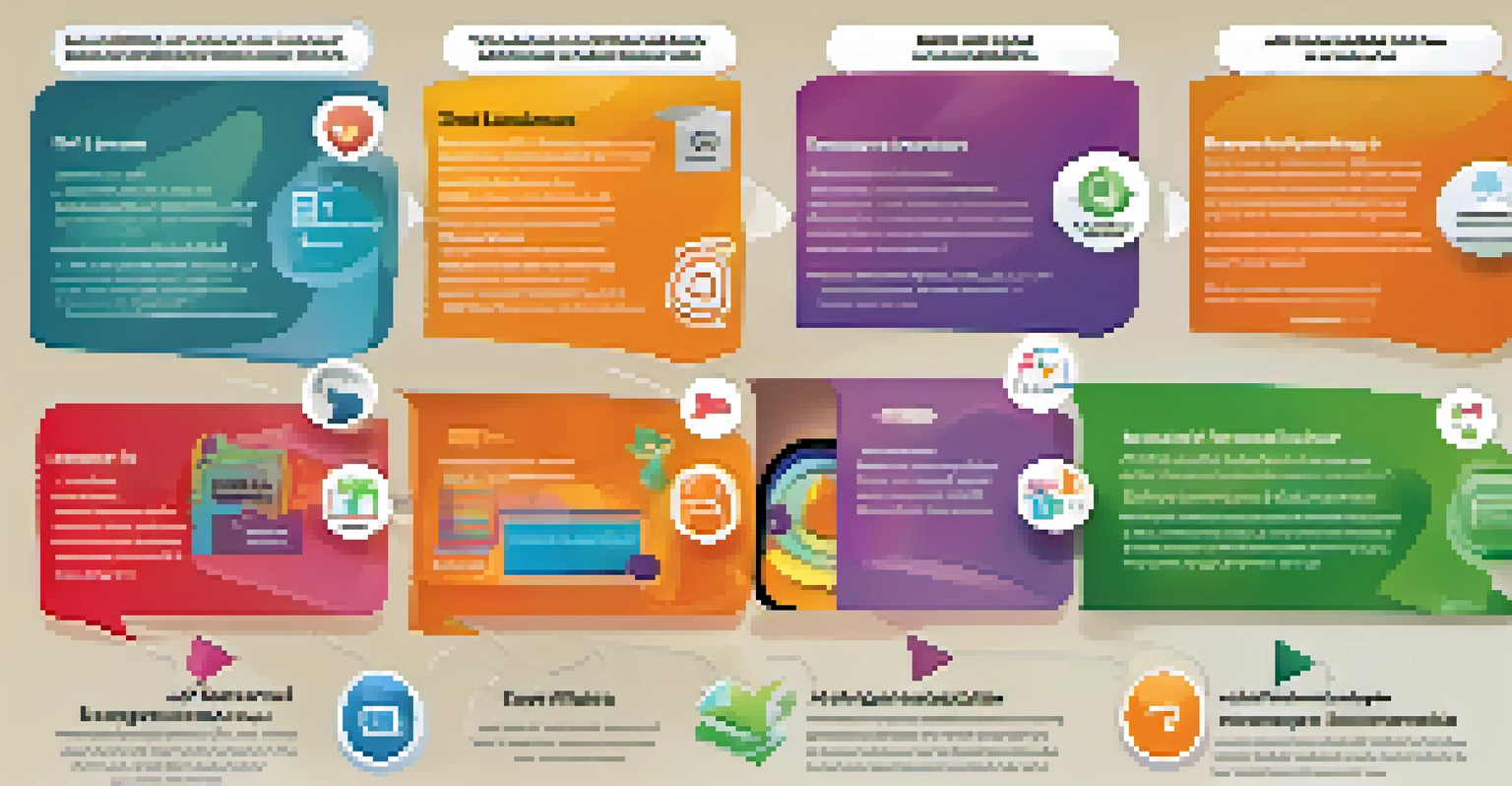Remote Learning and Virtual Reality: Bridging the Gap

The Rise of Remote Learning in a Digital Age
Remote learning has become increasingly popular, especially in recent years, as technology continues to evolve. The shift from traditional classrooms to online platforms has opened doors for students worldwide, providing greater flexibility and access to education. However, this transition also highlighted gaps in engagement and interaction that some learners face in a virtual environment.
The beautiful thing about learning is that no one can take it away from you.
As educators sought ways to enhance remote learning experiences, the need for innovative solutions became apparent. One promising avenue is the integration of virtual reality (VR), which offers immersive environments that can simulate real-life classroom settings. This technology not only captivates students' attention but also encourages active participation, making learning more dynamic.
In essence, remote learning has transformed the educational landscape, but it also demands creative approaches to maintain student engagement. VR has emerged as a potential game-changer, bridging the gap between distance education and the interactive experiences found in physical classrooms.
Understanding Virtual Reality: A Quick Overview
Virtual reality is an interactive technology that creates a simulated environment, allowing users to experience and engage with digital worlds as if they were real. By wearing VR headsets, students can explore different settings, from ancient civilizations to outer space, enhancing their learning experience. This technology can be particularly beneficial in subjects that benefit from visualization, such as science or history.

Unlike traditional learning methods, where content is often presented in a linear fashion, VR enables a more exploratory approach. Students can interact with 3D models, conduct virtual experiments, and even collaborate with peers in a shared digital space. This hands-on experience can lead to deeper understanding and retention of information, making learning more impactful.
VR Enhances Engagement in Learning
Integrating virtual reality into remote education significantly boosts student engagement by creating immersive and interactive experiences.
Overall, virtual reality serves as a bridge between the limitations of remote learning and the engaging experiences of in-person education. By transforming abstract concepts into tangible experiences, VR can revolutionize how students learn and connect with the material.
Benefits of Integrating VR into Remote Learning
Integrating virtual reality into remote learning offers a plethora of benefits that can significantly enhance educational outcomes. One of the most notable advantages is increased engagement; students are more likely to participate actively when they are immersed in a captivating environment. This heightened interest can lead to improved motivation and a more positive attitude toward learning.
Education is the most powerful weapon which you can use to change the world.
Additionally, VR can cater to different learning styles, providing visual, auditory, and kinesthetic experiences all in one platform. For instance, a student who struggles with traditional reading assignments may find that exploring a virtual world related to a historical event helps them grasp the material more effectively. This personalized approach can help ensure that all students have the opportunity to succeed.
Moreover, VR fosters collaboration among students, even when they are miles apart. By working together in virtual spaces, learners can share ideas, solve problems, and build relationships, which are essential elements of a well-rounded education. This sense of community can alleviate feelings of isolation often associated with remote learning.
Challenges Faced with VR in Remote Learning
Despite its potential, integrating virtual reality into remote learning is not without challenges. One significant barrier is the cost; acquiring quality VR equipment and software can be prohibitive for some institutions and students. This financial hurdle can create disparities in access, leaving some learners at a disadvantage compared to their peers with access to the necessary technology.
Another challenge is the learning curve associated with using VR. While many students are tech-savvy, not everyone is familiar with virtual reality tools. Educators may need to invest time in training both themselves and their students to maximize the effectiveness of the technology, which can be a daunting task amidst an already packed curriculum.
VR Supports Diverse Learning Styles
Virtual reality caters to various learning styles, offering visual, auditory, and kinesthetic experiences that enhance understanding and retention.
Lastly, technical issues can arise during virtual sessions, such as connectivity problems or software glitches. These disruptions can frustrate students and educators alike, undermining the immersive experience that VR aims to provide. To fully harness the benefits of VR in remote learning, these challenges must be addressed thoughtfully.
Real-World Examples of VR in Education
Several educational institutions have successfully integrated virtual reality into their curricula, showcasing its effectiveness in enhancing remote learning. For example, Stanford University’s Virtual Human Interaction Lab allows students to explore real-world scenarios, such as social interactions and environmental changes. This hands-on experience provides a deeper understanding of complex subjects, making theoretical concepts more relatable.
Another inspiring example is the platform ClassVR, which offers a library of VR lessons across various subjects. This resource has been particularly beneficial for schools that lack funding for extensive VR programs, giving teachers and students access to immersive content without the hefty price tag. By incorporating VR into their lessons, educators can create a more engaging learning environment, even from a distance.
These real-world applications demonstrate the potential of virtual reality to transform remote learning. As more institutions embrace this technology, it will be interesting to see how it continues to shape the educational landscape and provide innovative solutions to age-old challenges.
Future Trends: The Evolution of Remote Learning with VR
Looking ahead, the future of remote learning with virtual reality is promising, as advancements in technology continue to emerge. With the development of more affordable and accessible VR tools, a wider range of students will be able to benefit from these immersive experiences. This evolution could lead to a more equitable educational landscape, where every learner has access to engaging and interactive learning opportunities.
Moreover, as educators become more comfortable with VR technology, we may see a surge in creative applications of virtual reality in various subjects. From virtual field trips to historical reenactments, the possibilities are virtually limitless. This innovative approach can not only enrich learning experiences but also ignite a passion for knowledge in students.
Challenges of VR in Education
Despite its benefits, the adoption of VR in remote learning faces challenges like cost, accessibility, and the need for technical training.
Ultimately, the integration of VR in remote learning has the potential to revolutionize education as we know it. By embracing technology and fostering collaboration, we can create a more engaging and effective learning environment, ensuring that students are prepared for the challenges of the future.
Conclusion: Bridging the Gap with VR in Education
In conclusion, the combination of remote learning and virtual reality presents an exciting opportunity to bridge the gap in education. By enhancing engagement, catering to diverse learning styles, and fostering collaboration, VR has the potential to transform how students learn and connect with the material. As we continue to navigate the challenges of remote education, embracing innovative technologies like VR can make a significant difference.
However, it is essential to address the challenges associated with VR implementation, such as cost and accessibility, to ensure that all students can benefit from this technology. As we move forward, collaboration between educators, technologists, and policymakers will be crucial in creating a more inclusive and effective educational landscape.

By leveraging the power of virtual reality, we can create a future where remote learning is not just a substitute for traditional education, but an enriching experience that inspires curiosity and fosters a love for learning. Together, we can bridge the gap and pave the way for a brighter educational future.